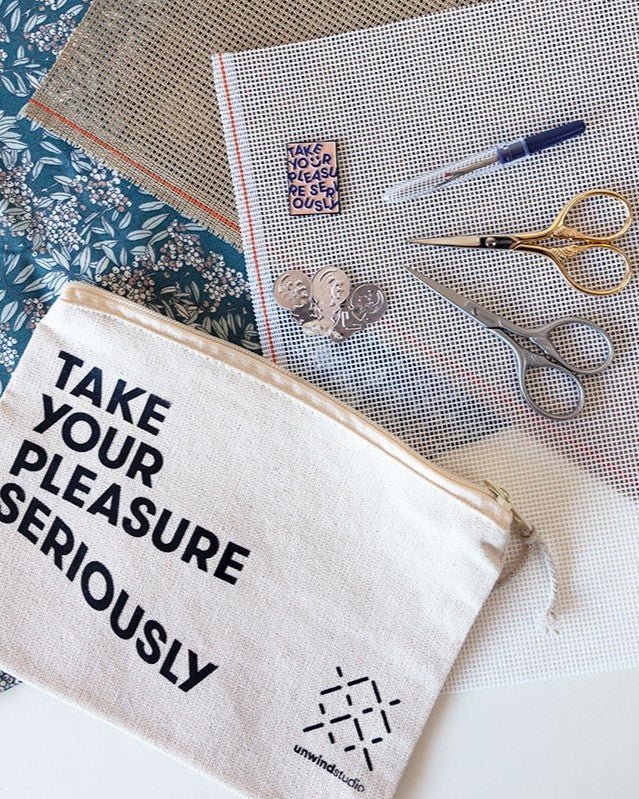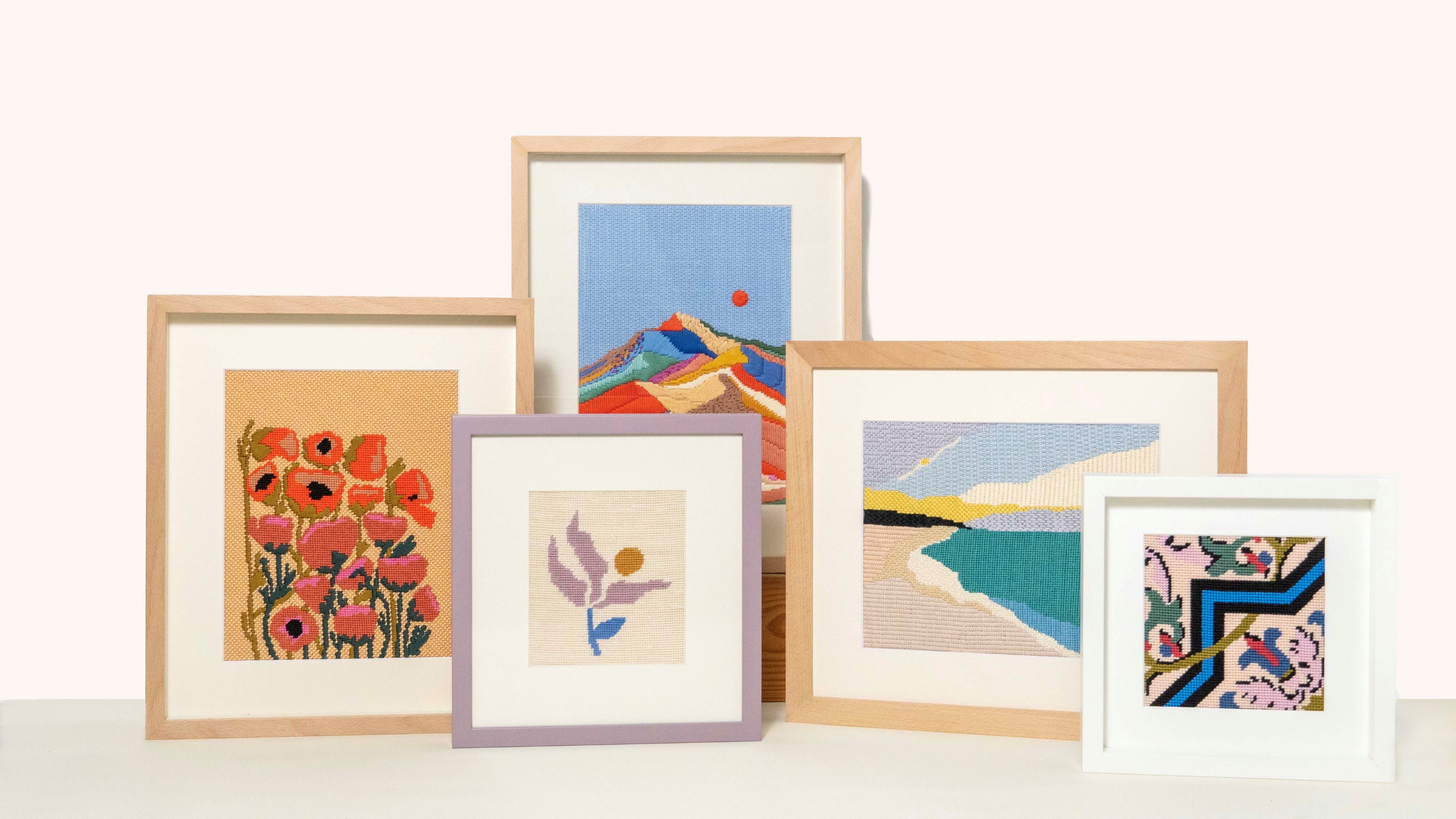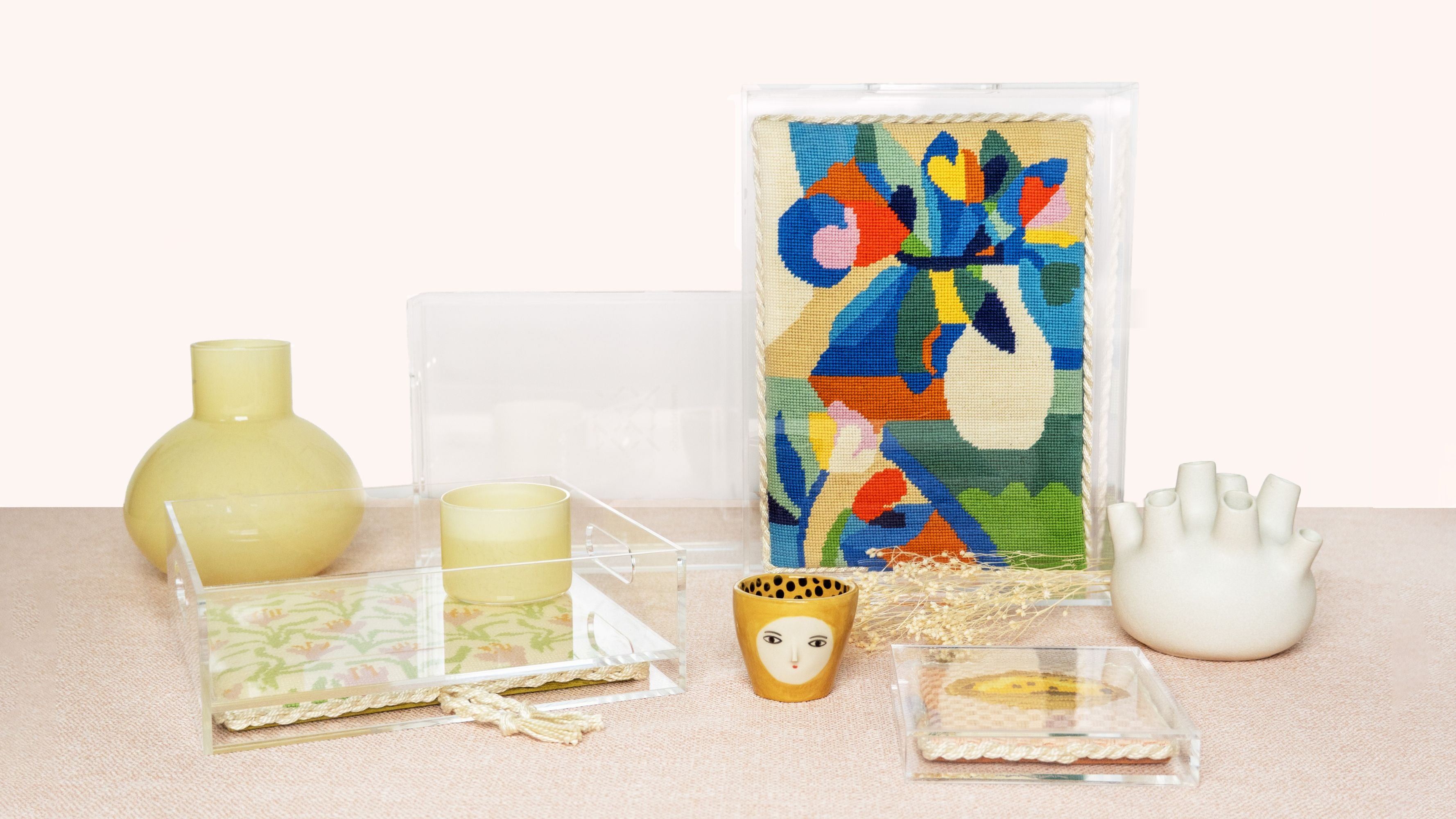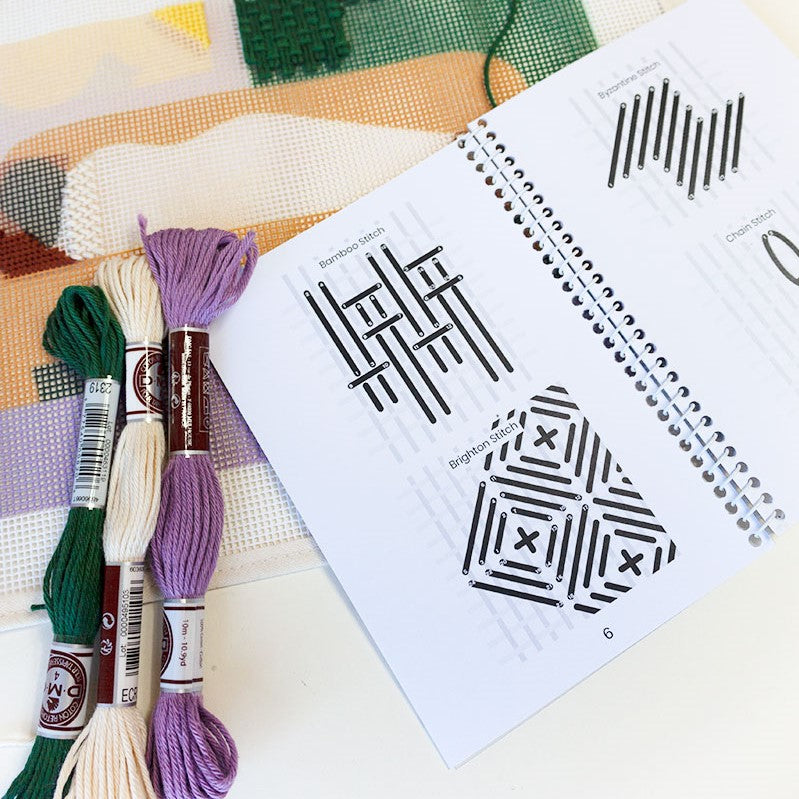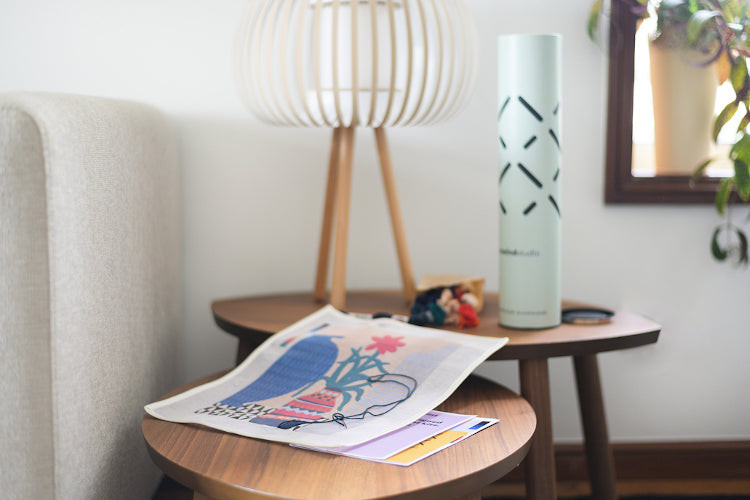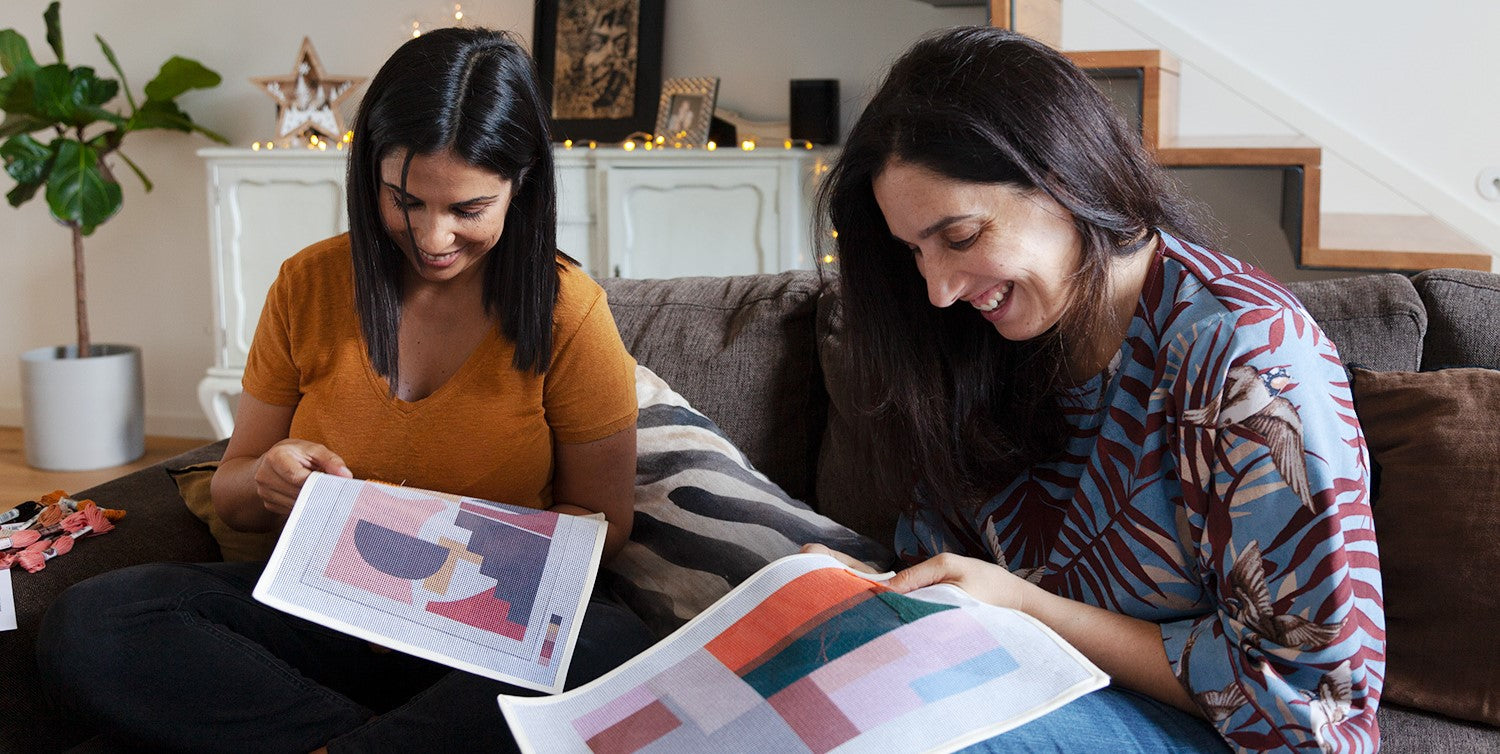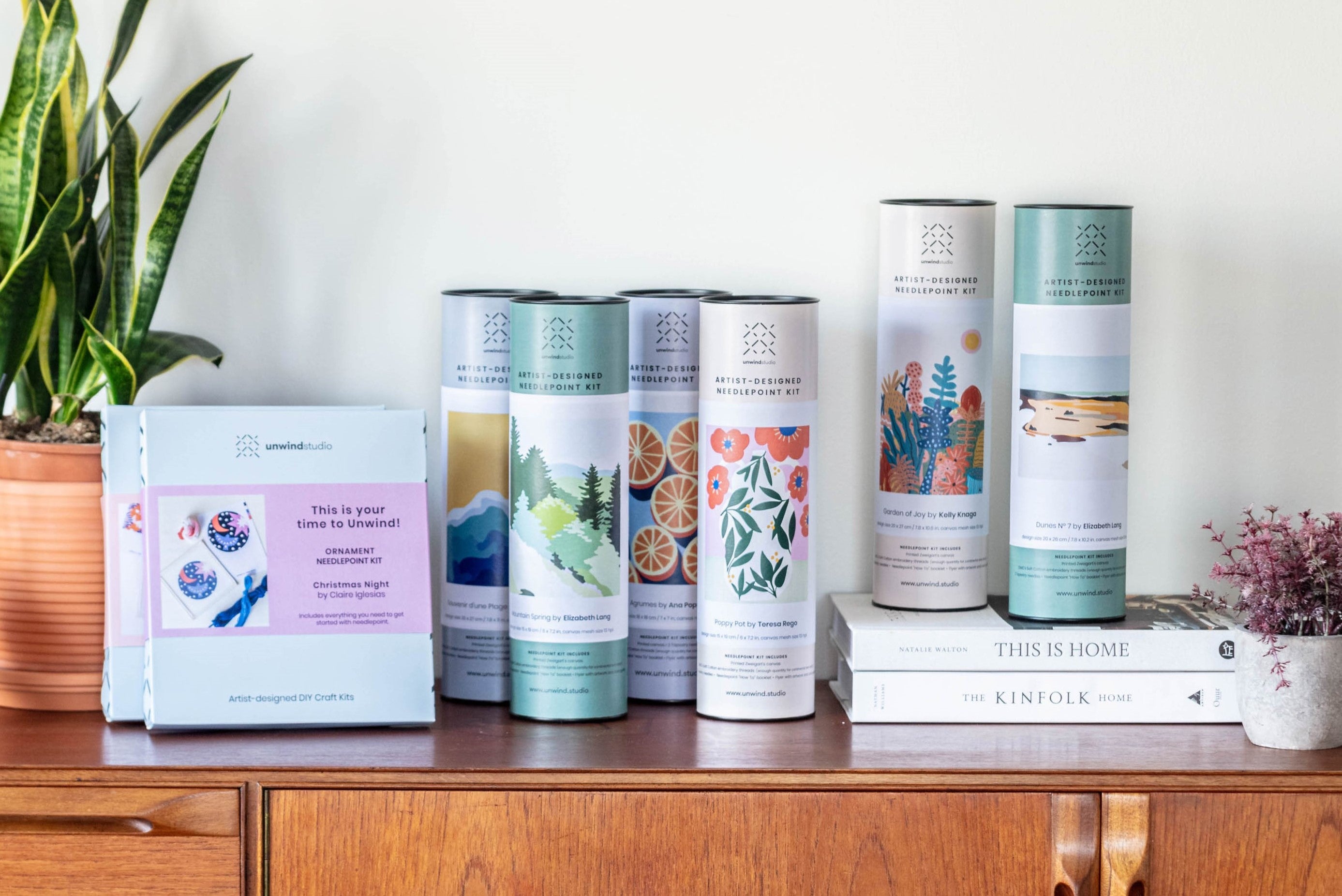Best Needlepoint Stitches for Water
Depicting water in needlepoint can be one of the most exciting creative challenges. From a mirror-smooth lake to the crash of ocean waves, water is never static! It's all about movement, texture, and light. Choosing the right stitches can transform a flat blue area into something full of life, energy, and depth.
Using decorative stitches instead of (or alongside) the classic tent stitch allows you to:
-
Add realistic textures and movement.
-
Suggest light reflections and depth.
-
Speed up coverage on large water areas.
-
Introduce variation and avoid a monotonous look.
Below are six of our favorite stitches for water. Each one offers its own unique qualities, and combining them can create stunning, layered effects!
- Check out the full list of our Recommended Needlepoint Stitches for Water.
1. Long Stitch
The Long Stitch is a classic for representing smooth, flowing surfaces. It involves making elongated stitches across the canvas, either horizontally, vertically, or diagonally, depending on the direction of the water’s movement in your design.
Why we love it for water:
-
Covers large areas quickly, making it perfect for big expanses of ocean or lake.
-
The elongated lines naturally suggest fluidity and motion.
-
Easy to blend colors for smooth gradients: ideal for sunrise or sunset reflections on water.
Best for:
Calm seas, still lakes, reflections, or gentle rivers where you want a sleek, uninterrupted look.

Designs: Le Temps Est Bon (discountinued) and Souvenir D'une Plage
- Find the complete stitch guide for Souvenir D'une Plage here!
2. French Knots (for foam)
French Knots are tiny, raised stitches created by wrapping the thread around the needle before inserting it back into the canvas. They add small, tactile details that stand out from flatter stitches.
Why we love it for water:
-
Mimics the bubbly, foamy look of breaking waves or waterfall spray.
-
Adds dimension and makes certain water details “pop.”
-
Works well over other stitches for an extra realistic touch.
Best for:
Shoreline foam, white water rapids, waterfall bases, splashes.

Design: Souvenir D'une Plage
- Find the complete stitch guide here!
3. Brick Stitch
Brick Stitch creates rows of even, rectangular stitches that resemble the offset layout of bricks in a wall. It offers structure and rhythm, yet feels softer than a strict geometric pattern.
Why we love it for water:
-
Works beautifully to create a sense of layered movement,think waves rolling toward shore.
-
Adds subtle texture without overpowering the design.
-
Great for tonal shifts when used with two or more shades of the same color, as you can see in the example below.
Best for:
Harbors, structured wave patterns, or places where water meets man-made elements like docks or boats, dual dual-tone water bodies.

Design: Water Lilies Bookmark
- Find the complete stitch guide here!
4. Nobuko Stitch
Nobuko Stitch alternates short and long stitches within each row, producing a subtle “up and down” texture. This gives a rich visual rhythm while still covering the canvas efficiently.
Why we love it for water:
-
The staggered height of the stitches suggests the uneven surface of moving water.
-
Perfect for indicating ripples or shimmer from sunlight.
-
Holds up well in both large and small sections of a design.
Best for:
Choppy water, gentle coastal waves, reflections of trees or buildings in ponds.

Design: Souvenir D'une Plage
- Find the complete stitch guide here!
5. Bargello Wave
Bargello Wave is a variation of Bargello Stitch that creates flowing, undulating patterns. It’s a bold, decorative stitch that can be adapted to fit different scales.
Why we love it for water:
-
Naturally mimics the rise and fall of waves.
-
Works beautifully with ombré threads or gradient color changes.
-
Perfect for a stylized or artistic interpretation of water movement.
Best for:
Open sea scenes, stylized wave designs, decorative water borders.

Design: Diver
- Find the complete stitch guide here!
6. Diagonal Parisian
The Diagonal Parisian Stitch is made up of slightly longer stitches arranged in a diagonal, step-like pattern. It creates a woven effect that’s both structured and fluid.
Why we love it for water:
-
Suggests diagonal ripples or wind-disturbed surfaces.
-
Great for adding a sense of depth and direction in water areas.
-
Offers visual interest without being too bold or busy.
Best for:
Windy lake surfaces, angled reflections, water with gentle diagonal flow like rivers.

Design: Chama River
- Find the complete stitch guide here!
Extra Tips for Stitching Water
-
Blend colors for realism: Use two strands of different shades together, or alternate colors row by row to create a natural mix of tones.
-
Combine stitches: For example, fill the base of the ocean with Long Stitch, add Bargello Wave for wave crests, and finish with French Knots for foam.
-
Think about light: Water is all about reflection: add lighter or metallic threads in certain areas to represent sunlight or moonlight.
-
Play with direction: Change stitch direction to match water flow or perspective in your design.
-
Test before committing: Always try a small sample to see how the stitch looks in your chosen colors!
You might also like...
- The Best Needlepoint Stitches for Skies
- Best Needlepoint Stitches for Background Areas
- Our favorite Needlepoint Decorative Stitches
With these stitches in your repertoire, you can capture water in all its form, from tranquil and glassy to wild and crashing. Experiment, layer, and let your stitches flow just like the water you’re recreating.
Happy Stitching :)




